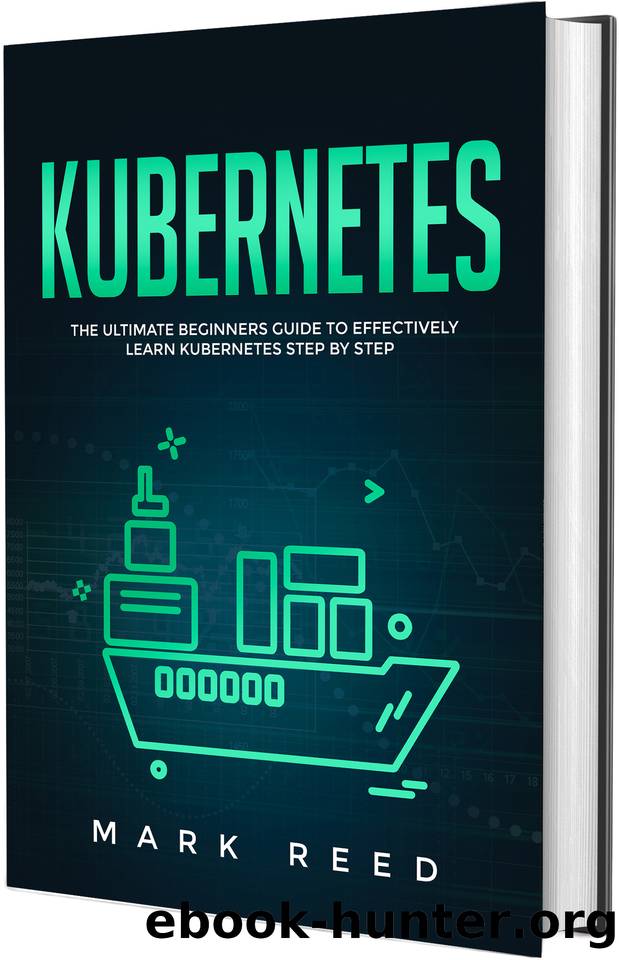Kubernetes: The Ultimate Beginners Guide to Effectively Learn Kubernetes Step-by-Step by Reed Mark

Author:Reed, Mark [Reed, Mark]
Language: eng
Format: epub
Publisher: Publishing Factory
Published: 2020-08-19T16:00:00+00:00
Chapter Five:
Scheduler
Scheduling Overview
The schedule is majorly focused on pods created in the application, which has no nodes attached to it at that moment. For every pod that is used in the discovery of the scheduling system, each is responsible for finding the best node on which the pod will run. For this reason, the scheduler reaches the placement decisions, where it will account for scheduling principles. In case you need to understand how the pods are placed onto a particular node, there is a need to create a planning implementation by the use of the custom scheduler , which would help you learn how the scheduling is done. Hence, Kube-scheduler is normally preferred as the default schedule for the Kubernetes. They normally run on a control plane, which is designed in such a way that it enables one to navigate around the system, and it sometimes doesn’t need to write down the components of the pods, for it is automated in the system without complication. For every newly created pod and schedule code created, the Kube-scheduler optimizes the node on which the pod will run.
However, the container has different requirements, whereby there is adequate resource allocation. In this case, every node needs to be filtered according to specific scheduling requirements. In a cluster, feasible pods can meet the scheduling requirements of other pods and, in case there is no suitability of the nodes used in the application, pods will always remain and be scheduled until the replacement isdone by the scheduler. There is a way for the pod to function on a possible node and pick the node with the highest feasibility to run within the application. After that is done, the schedule server will notify the API server on the possible decision, which is made by the binding processes of the scheduler. However, there are some factors that need to be accounted for when making scheduling decisions. With finding the feasible nodes for the scheduler, there is also the need to recognize how each pod is created and modified on the application.
Some functions of the Kube-scheduler include selecting nodes for each pod for each two-step preparation. The overview of the Kubernetes scheduling has a scheduling overview that maintains call objects and aid in the display system, which generates the maintenance plan. Normally, it deals with the troubleshooting and maintenance of various aspects, which usually involve debugging pods and containers. These then involve the testing services meant for connectivity and interpreting the resource statuses of the nodes in the Kubernetes services. In this overview, the concept concentrates majorly on the app and cluster levels’ maintenance, along with having much to do with troubleshooting, debugging, container testing, the etcd, and the Kubernetes control plane storage.
Users will encounter some problems when typing full commands in Kubernetes, which include the kubect1 , as incorporated in the application. The autocomplete of the functions of the commands are integrated into the code application—for one to solve some of the system issues in the application, it would be through auto-completion of the kubect1 through Linux and bash shell.
Download
This site does not store any files on its server. We only index and link to content provided by other sites. Please contact the content providers to delete copyright contents if any and email us, we'll remove relevant links or contents immediately.
Grails in Action by Glen Smith Peter Ledbrook(9163)
Sass and Compass in Action by Wynn Netherland Nathan Weizenbaum Chris Eppstein Brandon Mathis(8808)
Azure Containers Explained by Wesley Haakman & Richard Hooper(7440)
Configuring Windows Server Hybrid Advanced Services Exam Ref AZ-801 by Chris Gill(7432)
Kotlin in Action by Dmitry Jemerov(7263)
Running Windows Containers on AWS by Marcio Morales(6982)
Microsoft 365 Identity and Services Exam Guide MS-100 by Aaron Guilmette(5399)
Microsoft Cybersecurity Architect Exam Ref SC-100 by Dwayne Natwick(5208)
Combating Crime on the Dark Web by Nearchos Nearchou(4978)
The Ruby Workshop by Akshat Paul Peter Philips Dániel Szabó and Cheyne Wallace(4667)
Management Strategies for the Cloud Revolution: How Cloud Computing Is Transforming Business and Why You Can't Afford to Be Left Behind by Charles Babcock(4527)
Python for Security and Networking - Third Edition by José Manuel Ortega(4233)
The Age of Surveillance Capitalism by Shoshana Zuboff(4209)
Learn Wireshark by Lisa Bock(4115)
The Ultimate Docker Container Book by Schenker Gabriel N.;(3886)
Learn Windows PowerShell in a Month of Lunches by Don Jones(3681)
DevSecOps in Practice with VMware Tanzu by Parth Pandit & Robert Hardt(3566)
Windows Ransomware Detection and Protection by Marius Sandbu(3540)
Blockchain Basics by Daniel Drescher(3507)
